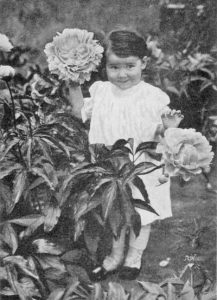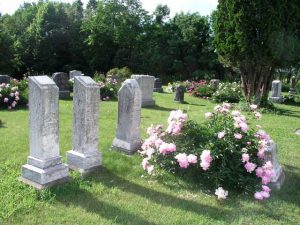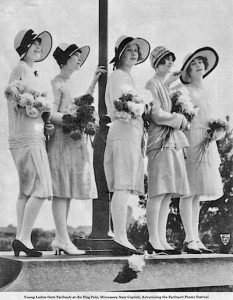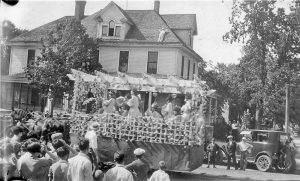Small Home Gazette, Winter 2018
Spectacular Old Peonies Deserve to be Rescued
“If we decide we want another peony, we’ll buy one,” said my brother- in-law.
 We were looking at a vast expanse of the bright green new sod covering the back yard of the house he and his wife had just bought. Yesterday a large peony bush had stood next to the fence. It was just beginning to bud. Now there was only green lawn.
We were looking at a vast expanse of the bright green new sod covering the back yard of the house he and his wife had just bought. Yesterday a large peony bush had stood next to the fence. It was just beginning to bud. Now there was only green lawn.
Kevin had wanted me to see how nice the yard looked, but all I could see was what was missing—the peony.
The peony had come with the house and yard at closing, along with the two crab apples, a lilac and a Norway pine. But unlike those larger specimens, it was easy enough for the landscape service to mow down and cover up. The Norway pine looked to be about 75 years old. The peony could easily have been planted the same year, because peonies can live to be hundreds of years old.
Peony Fever
My brother-in-law and sister-in-law bought the house in the early spring—too early to detect any landscaping scheme. But the house was built in the 1920s, during the height of the country’s peony craze.
In 1929, St. Paul hosted the 20th Annual Peony Show. It opened at the State Fair Hippodrome on June 20 and lasted three days.
It started with a parade. Twenty-five peony-covered floats traveled from Iris Park, down Summit Avenue to Marshall and across the Marshall Avenue Bridge into Minneapolis. A Peony Girl was crowned; there was a Peony Ballet at the Peony Banquet held at The Commodore; and $1,500 in cash was awarded for the best blooms. Special cold-storage freight cars brought the flowers by rail from as far away as Massachusetts.
The world-famous A.M. Brand peony nursery of Faribault, Minnesota, brought a single specimen of each of the 100 varieties they propagated. In fact, the peony ‘Mrs. A. Brand’ took second place in a class of 20 white or cream blooms. The winner of that class was ‘La Rosiere,’ grown by Henry S. Cooper of Kenosha, Wisconsin.
Back at my brother-in-law’s peony-less lawn, I now was wondering if the missing and probably murdered peony had been a ‘La Rosiere?’ Could it have been one of the top peonies listed in 1929? Those were, in order: ‘Le Cygue,’ ‘Therese,’ ‘Solange,’ ‘Touragelle’ and ‘Mme. Jules Dessert.’ Or was it—like the peony bush at my grandparent’s house—brought from the family farm along with the lilac cutting?
 In any case, it certainly was one of the 300 named varieties that sold from between 25 cents and $100 in the 1920s. The ‘20s were lavish with peonies.
In any case, it certainly was one of the 300 named varieties that sold from between 25 cents and $100 in the 1920s. The ‘20s were lavish with peonies.
Today the peonies sold at most garden stores are just labeled “pink,” “white” or “red.” From the hundreds of named varieties, your choices are narrowed to three colors. It’s easier to propagate peonies this way, but it’s a long way from the Peony Ballet at the Commodore.
When I look through old garden catalogs, I often wish I could place an order. Their fragrances are described, such as “clove,” or “roses,” or simply “highly perfumed.” I’d especially like the ‘Livingstone,’ described as a late-flowering peony of pale lilac with edges tipped in silver.
Cemetery Finds
 Of course, they can’t be found in most garden stores today, but they still are blooming in the backyards of established neighborhoods and in county cemeteries, where they were planted to mark graves. In fact, while the red-flowering fern-leaf peony had disappeared as a garden plant, it was still growing in Midwest cemeteries. Stock propagated from those rediscovered plants has made its way back into garden catalogs—as one of the most expensive varieties.
Of course, they can’t be found in most garden stores today, but they still are blooming in the backyards of established neighborhoods and in county cemeteries, where they were planted to mark graves. In fact, while the red-flowering fern-leaf peony had disappeared as a garden plant, it was still growing in Midwest cemeteries. Stock propagated from those rediscovered plants has made its way back into garden catalogs—as one of the most expensive varieties.
The true name of the peony in the back yard of an older home is likely to remain a mystery, but its color, its fragrance and the time of its flowering all hold clues to its special pedigree. And it very likely is irreplaceable.













